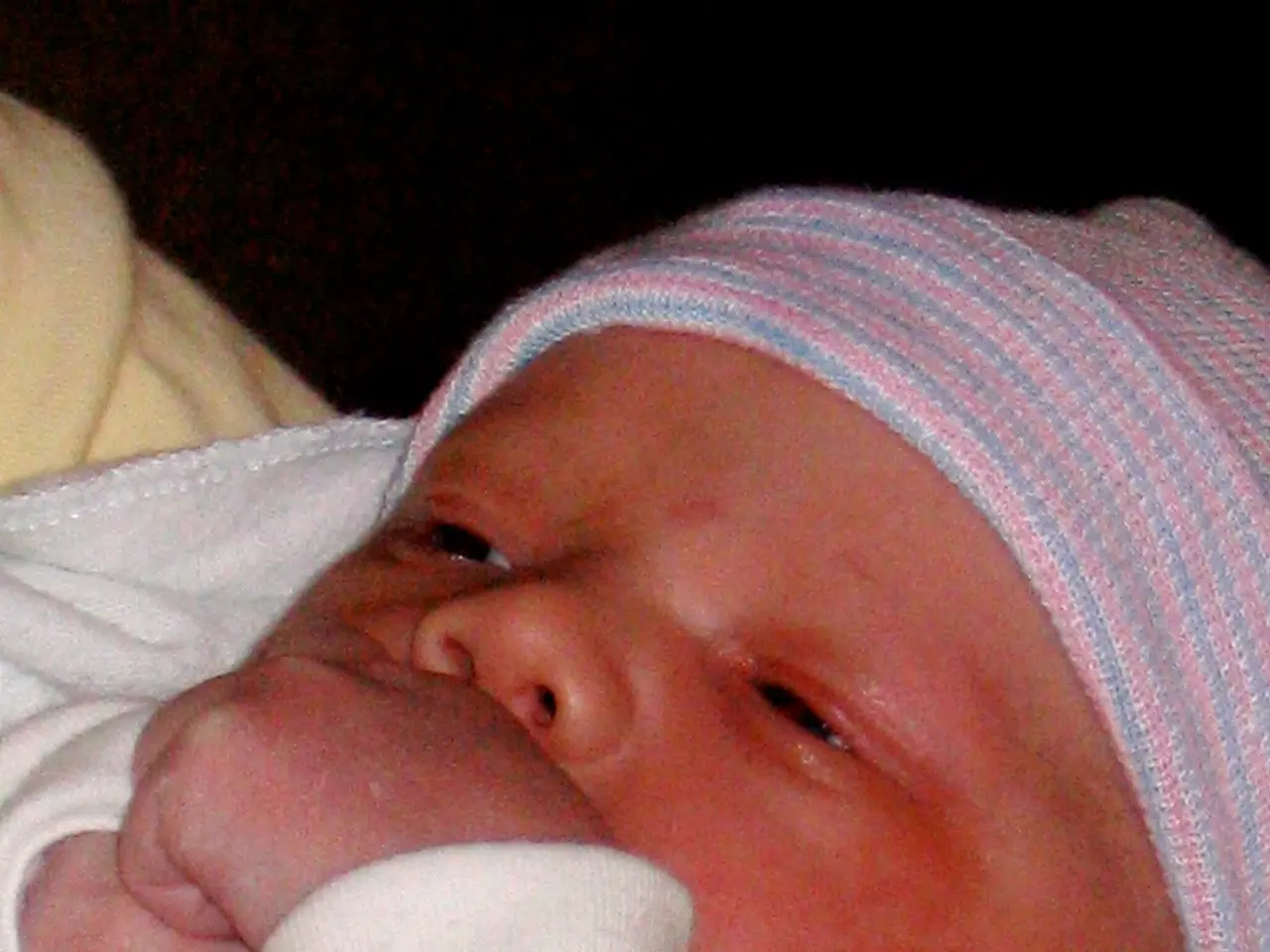Newborn Infection: Causes, Signs, and Remedies
Neonatal sepsis is a serious bloodstream infection that affects newborns, primarily caused by bacteria transmitted before, during, or after birth. This infection can have severe consequences if not promptly diagnosed and treated.
Causes
Neonatal sepsis can be categorised into early-onset (within the first 72 hours after birth) and late-onset (after 72 hours).
Early-onset sepsis is usually due to bacterial transmission from the mother, such as Group B Streptococcus or Escherichia coli.
Late-onset sepsis, on the other hand, is often caused by bacteria from the newborn's environment, including coagulase-negative staphylococci and other hospital-acquired pathogens.
Symptoms
Newborns with sepsis may show various symptoms, including respiratory distress, refusal to feed or poor feeding, fast heart rate or weak pulse, fast breathing or shortness of breath, skin changes such as cold, blotchy, or jaundice (yellowing of skin or eyes), behavioural changes like lethargy, seeming confused, or seizures, signs of shock, extreme pain, or discomfort, dehydration signs, and changes in the body or behaviour/appearance.
Treatment
Treatment for neonatal sepsis typically involves empiric antibiotic therapy, supportive care, diagnostic testing, and special considerations. Empiric antibiotic therapy usually starts with intravenous ampicillin plus gentamicin and/or cefotaxime, tailored based on age, suspected infection source, and risk factors. Supportive care includes cardiovascular support with IV fluids and respiratory assistance as needed. Diagnostic testing involves blood cultures, cerebrospinal fluid analysis, and other labs to identify the causative organism and guide narrowing of antibiotic regimens. Special considerations include infectious disease consultation for resistant or atypical pathogens, treatment duration depending on the causative organism and site of infection, and prevention measures such as screening and treatment of maternal infections and infection control in healthcare settings to reduce late-onset infections.
Prevention
Preventive measures for neonatal sepsis include prenatal care, immunization, hand washing, keeping sick people away from the baby, extra care for infants in nurseries or intensive care units, precaution, and education.
Neonatal sepsis requires urgent hospital management to reduce the risk of serious complications, including organ failure and long-term neurological damage. The mortality rate of neonatal sepsis has increased over the past two decades, highlighting the importance of thorough knowledge of this disease and timely medical intervention to save lives.
[1] Neonatal Sepsis. (2021). In UpToDate. [2] Neonatal Sepsis. (2021). In National Organization for Rare Disorders (NORD). [3] Neonatal sepsis. (2021). In BMJ Best Practice. [4] Neonatal sepsis. (2020). In British Journal of Clinical Pharmacology. [5] Neonatal sepsis. (2021). In Merck Manual Professional Version.







